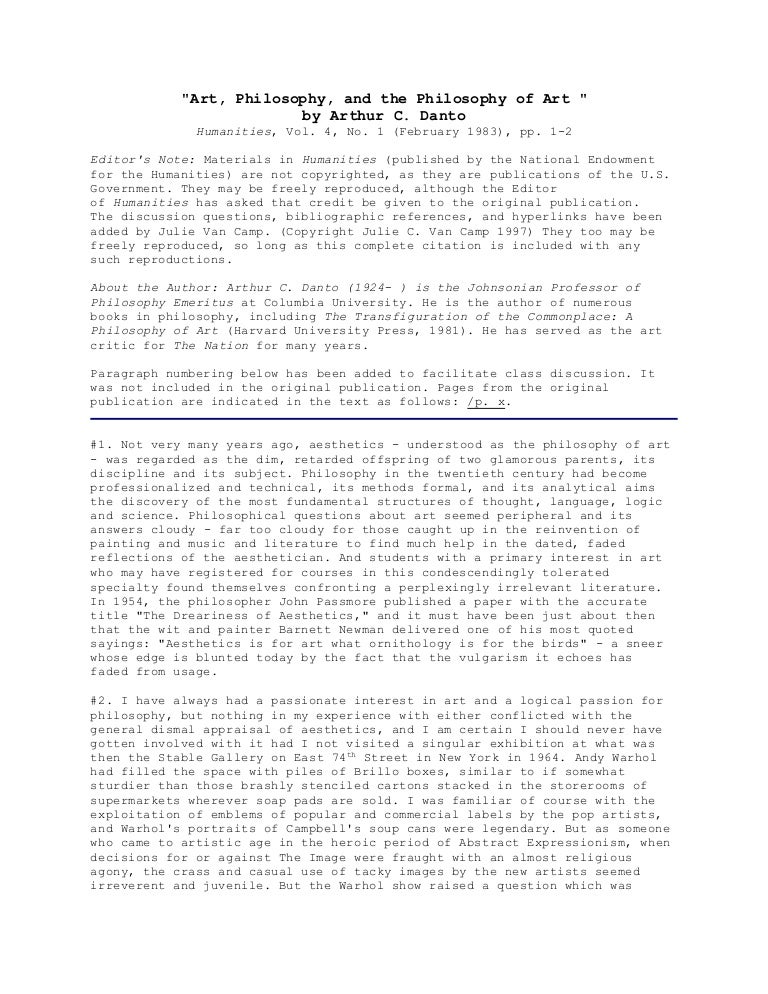

What Art Is is Danto’s most accessible articulation to date of his position on art.

As such, they elicit from viewers acts of interpretation designed to “grasp the intended meaning they embody.” For example, looking at the highly illusionistic sculpture that adorned public spaces in ancient Greece, Plato was led to conclude that the essence of art was imitation.Īfter considering and dismissing a number of definitions, Danto comes down on one that he thinks captures the “artness of art”: artworks are embodied meanings. By contrast, the philosophy of art is an inquiry that has been made all the more pressing by our pluralistic era’s various and competing conceptions of art.ĭanto advocates a strong essentialism, meaning that he thinks that one can arrive at a definition of art that holds for all instances of art, “irrespective of when they were made or will be made.” The mistake made by previous philosophers, he argues, consists of tying their definitions to something contingent-usually stylistic elements specific to the art of their times-rather than pegging them to something essential. He cites Marcel Duchamp’s readymades as examples of the uncoupling of art from traditional aesthetic concerns with beauty and taste.

For Danto, the relevance of aesthetics was seriously challenged by 20th-century art.


 0 kommentar(er)
0 kommentar(er)
